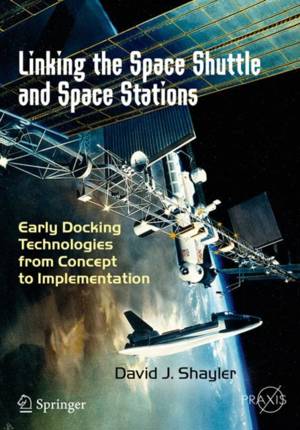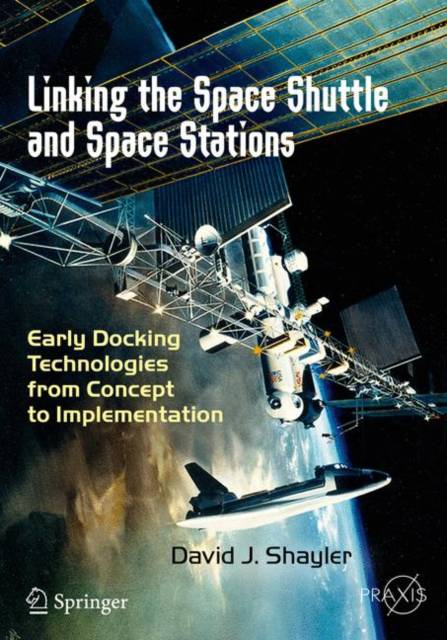
- Afhalen na 1 uur in een winkel met voorraad
- Gratis thuislevering in België vanaf € 30
- Ruim aanbod met 7 miljoen producten
- Afhalen na 1 uur in een winkel met voorraad
- Gratis thuislevering in België vanaf € 30
- Ruim aanbod met 7 miljoen producten
Zoeken
Linking the Space Shuttle and Space Stations
Early Docking Technologies from Concept to Implementation
David J Shayler
€ 29,95
+ 59 punten
Omschrijving
How could the newly authorized space shuttle help in the U.S. quest to build a large research station in Earth orbit? As a means of transporting goods, the shuttle could help supply the parts to the station. But how would the two entitles be physically linked?
Docking technologies had to constantly evolve as the designs of the early space stations changed. It was hoped the shuttle would make missions to the Russian Salyut and American Skylab stations, but thesewere postponed until the Mir station became available, while plans for getting a new U. S. space station underway were stalled.
In Linking the Space Shuttle and Space Stations, the author delves into the rich history of the Space Shuttle and its connection to these early space stations, culminating in the nine missions to dock the shuttle toMir. By 1998, after nearly three decades of planning and operations, shuttle missions to Mir had resulted in:
- A proven system to link up the space shuttle to a space station- Equipment and hands-on experience in handling tons of materials- An infrastructure to support space station assembly and resupply
Each of these played a pivotal role in developing the skills and procedures crucial to the creation of the later, much larger and far more complex International Space Station, as described in the companionvolume Assembling and Supplying the ISS: The Space Shuttle Fulfills Its Mission.
Docking technologies had to constantly evolve as the designs of the early space stations changed. It was hoped the shuttle would make missions to the Russian Salyut and American Skylab stations, but thesewere postponed until the Mir station became available, while plans for getting a new U. S. space station underway were stalled.
In Linking the Space Shuttle and Space Stations, the author delves into the rich history of the Space Shuttle and its connection to these early space stations, culminating in the nine missions to dock the shuttle toMir. By 1998, after nearly three decades of planning and operations, shuttle missions to Mir had resulted in:
- A proven system to link up the space shuttle to a space station- Equipment and hands-on experience in handling tons of materials- An infrastructure to support space station assembly and resupply
Each of these played a pivotal role in developing the skills and procedures crucial to the creation of the later, much larger and far more complex International Space Station, as described in the companionvolume Assembling and Supplying the ISS: The Space Shuttle Fulfills Its Mission.
Specificaties
Betrokkenen
- Auteur(s):
- Uitgeverij:
Inhoud
- Aantal bladzijden:
- 248
- Taal:
- Engels
- Reeks:
Eigenschappen
- Productcode (EAN):
- 9783319497686
- Verschijningsdatum:
- 5/07/2017
- Uitvoering:
- Paperback
- Formaat:
- Trade paperback (VS)
- Afmetingen:
- 171 mm x 245 mm
- Gewicht:
- 508 g

Alleen bij Standaard Boekhandel
+ 59 punten op je klantenkaart van Standaard Boekhandel
Beoordelingen
We publiceren alleen reviews die voldoen aan de voorwaarden voor reviews. Bekijk onze voorwaarden voor reviews.











